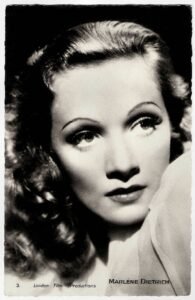The Butterfly Lighting: learn how this classic lighting technique creates dramatic shadows and highlights, perfect for enhancing portraits and adding a touch of elegance to your photos.
In the world of photography, capturing the perfect image is about more than just having a high-quality camera or a photogenic subject. One of the most crucial elements that can make or break a photograph is lighting.
While many might think that the subject or their features are at fault for an unflattering photo, more often than not, it’s the lighting that needs adjustment. This is where the photographer’s expertise comes into play. It’s their job to create custom lighting setups that complement the subject, bringing out their best features and setting the desired mood for the shot.
The Role of Lighting in Photography
Lighting in photography serves several purposes. It shapes the subject, adds depth, and can even influence the emotion conveyed by the image. Without proper lighting, even the most beautiful subject can appear flat, dull, or uninteresting. Photographers use various techniques and setups to manipulate light, ensuring that it enhances the subject’s features rather than detracts from them.
Classic Example: The 1940s Butterfly Lighting
One of the most iconic lighting setups used by photographers, especially during the Golden Age of Hollywood, is the Butterfly Lighting technique. Named for the butterfly-shaped shadow that appears under the subject’s nose, this lighting style is known for its glamorous and flattering results, particularly for women.


How to Achieve Butterfly Lighting
To create Butterfly Lighting, the primary light source, often called the key light, is placed directly in front of the subject and slightly above their eye level. This positioning causes the light to fall evenly across the face, with the butterfly shadow forming directly under the nose. Here’s a step-by-step guide to achieving this look:
- Position the Key Light: Place the key light slightly above and directly in front of the subject, angled down at approximately 25 to 30 degrees.
- Adjust the Distance: Move the light closer or farther away to control the intensity and softness of the shadows.
- Fine-Tune the Setup: Use a reflector or fill light below the subject’s face to soften shadows under the chin and around the edges of the face.
The Impact of Butterfly Lighting
This lighting technique accentuates the cheekbones and highlights the eyes, giving a dramatic yet elegant look. It’s particularly effective for creating a sense of classic beauty and sophistication. Many Hollywood starlets of the 1940s were photographed using this method, contributing to their iconic status.
The Photographer’s Creative Process
Creating custom lighting setups like Butterfly Lighting involves a blend of technical knowledge and artistic vision. Understanding how light interacts with different facial features and skin tones is key. Also you should consider the mood and message of the photo. You can transform an ordinary shot into something extraordinary by adjusting:
- the position
- intensity, and
- quality of the light
It’s all about the..
When it comes to photography, it truly is all about the lighting. The next time you find yourself unhappy with a photograph, remember that it’s not necessarily you—it might just be the lighting. Skilled photographers know how to manipulate light to create stunning images, highlighting your best features and capturing the desired mood.
Techniques like the 1940s Butterfly Lighting are just one example of how thoughtful lighting can make all the difference. So, trust in the photographer’s expertise and remember, it’s not you, it’s the lighting.
Curious to see butterfly lighting in action? Check out my gallery to view the portraits where this technique truly shines.
